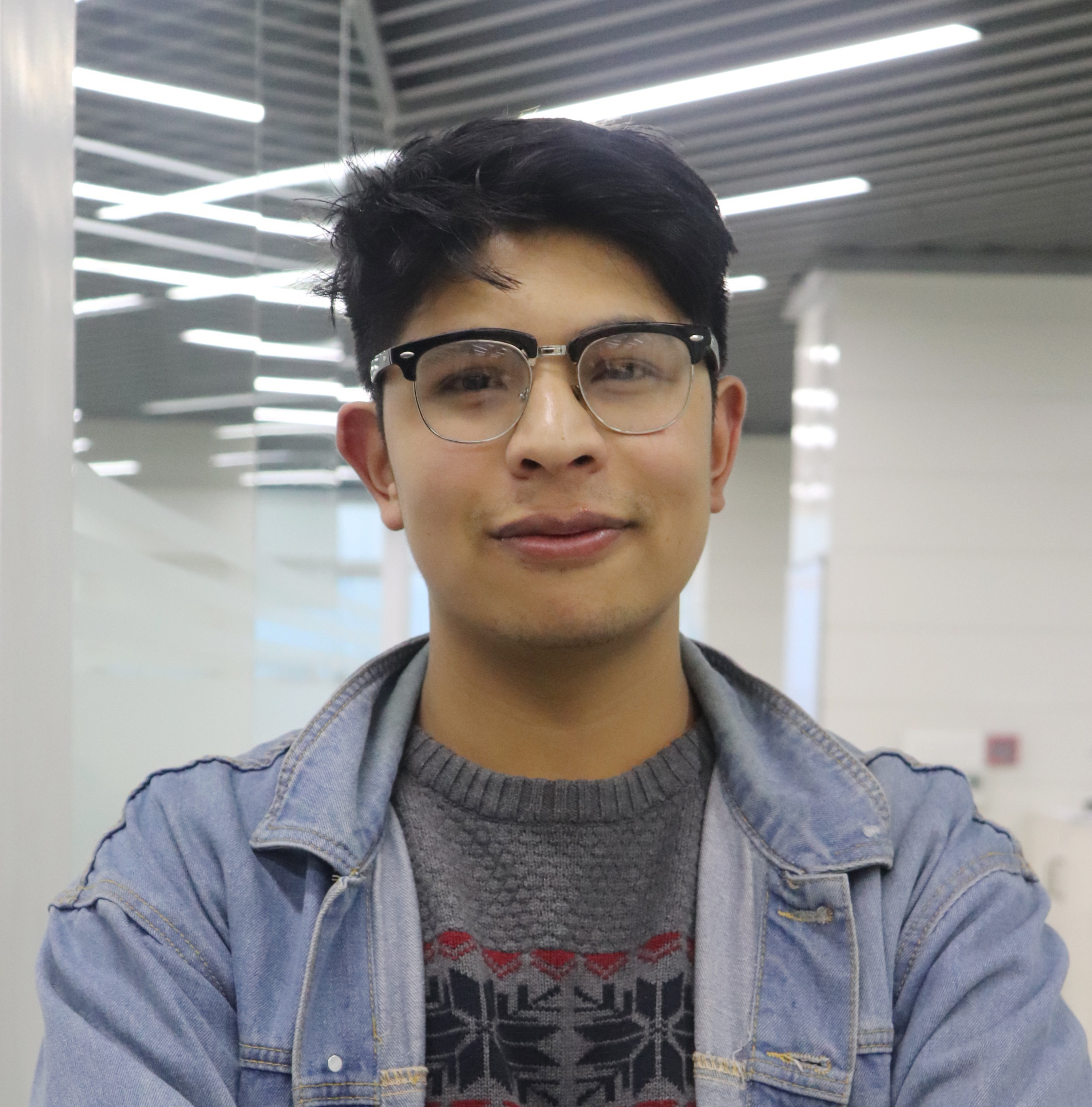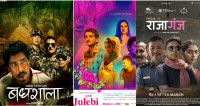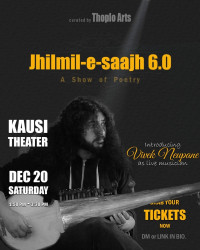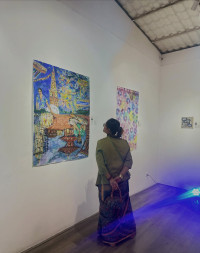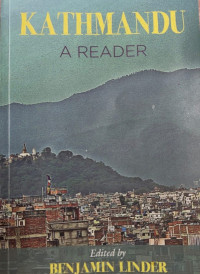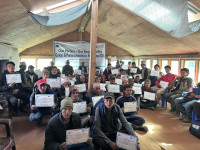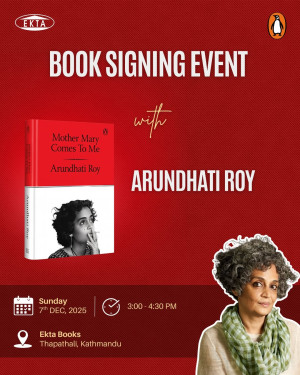Culture & Lifestyle
Where two worlds collide
The exhibition titled ‘Nowthere’ displays the works of contemporary artists and paubha painters, but fails to recognise the efforts of the latter..jpg&w=900&height=601)
Ankit Khadgi
Inside a neoclassical inspired heritage hotel, which once used to be the abode of the horses of Rana rulers, lies Siddhartha Art Gallery. A prominent space for artists, curators and connoisseurs to gather around and talk about art, Siddhartha Art Gallery is hosting an exhibition titled ‘Nowthere’ which witnesses collaboration among acclaimed Nepali and international contemporary artists as well as Nepali paubha painters. Artworks of eight artists are on display at the gallery, all of which are different from each other in terms of theme and medium.
On the ground floor of the gallery, half of the space is divided for viewers to witness the visual language of Seema Kohli, an acclaimed contemporary artist who, through her artworks, depicts the chronicles of yoginis, the female master practitioner of yoga, and dakinis, a sacred female spirit worshipped by Vajrayana Buddhists and Hindus as well.
While her artworks are from different series, they all embody the theme of spirituality and tranquillity in a way that one can see understand what the artist is trying to convey.
On the same floor, we have artworks of two other Nepali contemporary artists—Saurganga Darshandhari and Prithivi Shrestha. On both their works, the colour used on the canvas pop out beautifully, making it aesthetically pleasing to look at. The paubha artworks also add value to their creations.
One of Darshandhari artworks, which is titled ‘Maa and Mama’, could be taken as a homage for her matriarchs for their love and care. By employing watercolours and etching technique, she has portrayed two women—a mother and a grandmother. They are dressed in common attire, but a halo is glowing from their head and they are resting on a lotus. Darshandhari, through these motifs, is trying to compare the two characters in her works with god.
One of the highlights of the exhibition was Maria Wassem’s ‘Kingdom to Democracy’ series. On the photographs featuring various heritage sites of Kathmandu valley, the outlines made from pigment colours were drawn on it. The amalgamation of modern photography along with paubha inspired outlines compliments each other so well that the combination not only gives meaning to each other but is able to narrate a story too. In one of her artworks is an outline of Kasthamandap, and on its side is a stupa. With just an outline of a temple, the artist fills the void that currently exists, as the temple is still not constructed even after almost five years since it was destroyed by the earthquakes. Her work allows viewers to see what it will look like if the temple is reconstructed, standing tall.
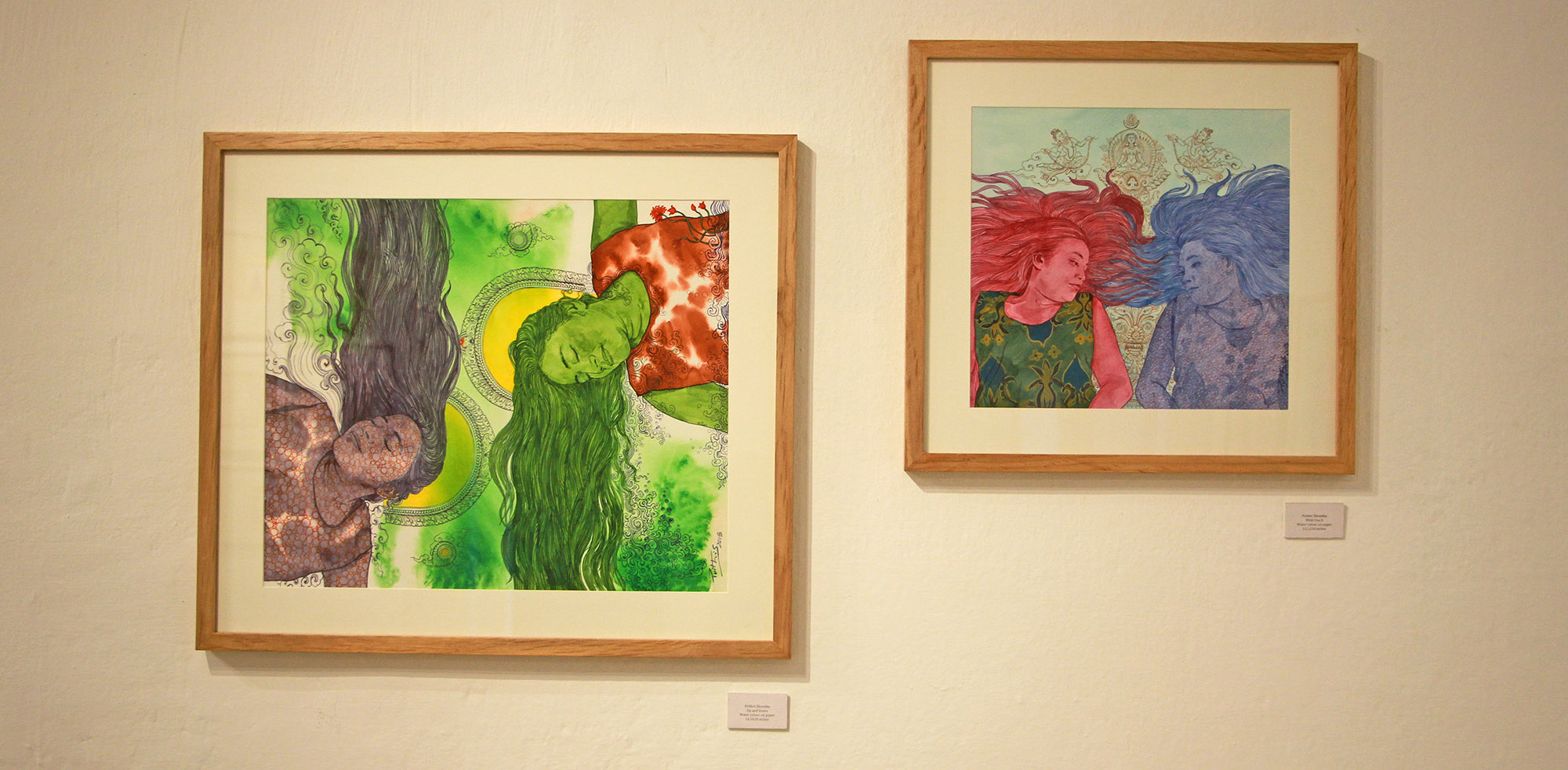
While the aforementioned artworks might be easy for the audience to comprehend, there are artworks that are difficult to analyse, particularly if the audience does not have prior knowledge of the issues and the themes the artists are trying to convey. For instance, two artworks of Waseem Ahmed could prove to be puzzling for the audience. In one of his artworks, which is untitled, there is an image of a dragon along with the sheet of a gold leaf. There is no information regarding what the artist is trying to express, and the experience of trying to find meaning in the piece of work is bewildering.
And this ambiguity is what makes it tough for the exhibition to make an everlasting impact. Of course, one could say an artist’s work is complete after they finish working on an art piece and it is up to the viewer to make meaning of it. But some of the artworks at the exhibition are so abstract that meaning is hard to come by, resulting in a lacklustre experience on the side of the audience.
Another downside of the exhibition is that it fails to recognise the efforts of the paubha painters. Just at the entry of the gallery, a larger poster featuring the name and the artists of the exhibition is placed. While the poster is decorated with the names of the contemporary artists, the paubha painters, however, get a small space for acknowledgement; and their names are collectively placed as contributors.
One might argue that since the paubha painters were working on a commission basis, the name of the artist who originally created the artwork before the paubha painters drew on them should get all the recognition. But if it was a collaboration between two art forms, then shouldn’t both the artists get equal acknowledgement? None of paubha artists’—Rabi Shrestha. Amir Shakya, Sujit Maharjan, Raju Shrestha and Tenzin Dhargay (Phenpo Tendhkar)—names appear below their artworks, and thus viewers do not know which particular paubha artist created which work. Just the name of the artist behind the paubha outlines would have been a great way of appreciating their works.
The exhibition will be held until March 10 at Siddhartha Art Gallery, Baber Mahal Revisited.




 14.12°C Kathmandu
14.12°C Kathmandu